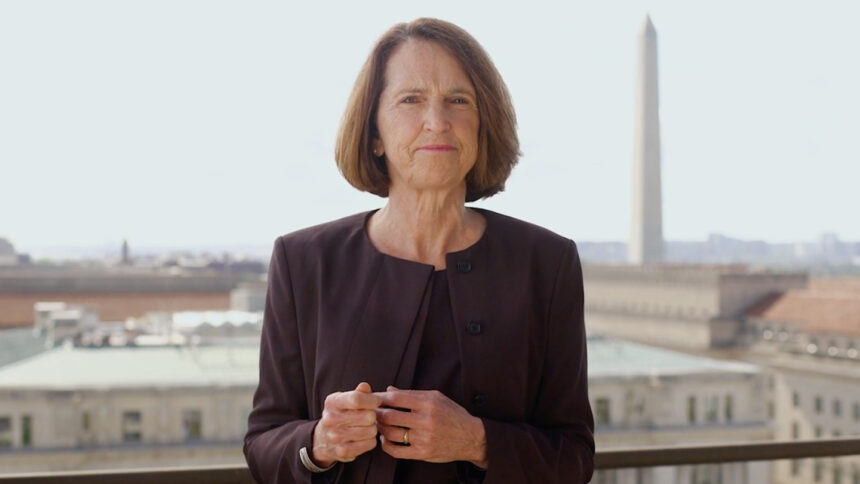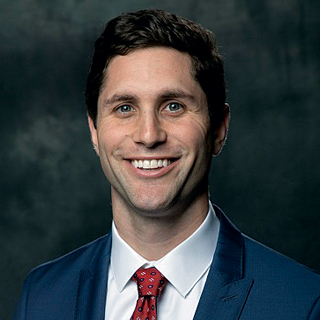
After 60 days of public and often-heated debate, the formal comment period on one of the most controversial federal healthcare regulations ever proposed comes to a close tonight.
Associations representing US nursing homes came out swinging in their official letters to the Centers for Medicare & Medicaid Services. It is the agency poised to impose the nation’s first federal nurse staffing minimums dictating the amount of direct patient care provided daily by certified nurse aides and registered nurses.
It is a sweeping effort that nursing home providers — and allies from other healthcare settings — argue will devastate nursing homes financially and lead to reduced access to care for patients.
While embracing the intent of the regulation, provider leaders said in multiple submissions that a one-size fits all approach with an estimated cost of more than $4 billion annually, and no funding mechanism, will not lead to better patient care.
“For the first time in decades, our federal government is committed to meaningful action to ensure America’s older adults and families can receive quality care in nursing homes, and in their homes and communities. We applaud that interest and share that goal. However the administration is not getting this right, yet,” LeadingAge President and CEO Katie Smith Sloan said in a press release shared in conjunction with her Nov. 1 letter to CMS Administrator Chiquita Brooks-LaSure.
“The proposal will fail because it does not consider two major issues: the ongoing workforce crisis and the proposal’s astronomical implementation costs,” Sloan added. “Should CMS opt to implement it as is, older adults and families’ already limited access to care will only get worse.”
As of Friday evening, the American Health Care Association/National Center for Assisted Living had yet to finalize its formal comment letter. But the organization, representing some 14,000 providers nationally, has led an effort to collect 10,000 comments from its members and affiliates. President and CEO Mark Parkinson continued to rally them late last week with a video asking for more emails and comments objecting to the “terrible proposal.”
“Tell CMS not to finalize this rule, as it is unfounded, unfunded, and unrealistic,” Parkinson said on social media.
Read on for a selection of comments that were among more than 26,000 posted to a public docket by late Friday. As of Sunday, some 36,000 comments had been received.
Katie Smith Sloan, President and CEO, LeadingAge
LeadingAge conducted its own cost estimates and found providers and states that reimburse for Medicaid-covered care would spend close to $7.14 billion annually to comply with the mandate.
“CMS has stated that they ‘welcome’ states who wish to discuss increasing Medicaid payment rates but we urge CMS to take greater responsibility and show the federal leadership necessary to make it happen,” Sloan wrote.
“Were CMS to push forward with this unfunded mandate, the unintended consequences would cripple the healthcare system,” she added. “Nursing homes would scramble to lure the limited RN workforce away from other healthcare settings that concurrently struggle with a workforce shortage. Where nursing homes were staffing up to meet minimum standards, home health, hospice, and hospitals would be losing the staff they need and have relied upon to care for the individuals they serve.
“Nursing homes that were unable to meet minimum staffing standards would be forced to deny admissions, take beds offline, or close the nursing home altogether,” she added. “This would mean that individuals who were no longer safe at home would have nowhere to go and individuals in need of post-acute care after hospitalization would either be stranded in the hospital, occupying valuable acute care beds needed for other individuals, or they would be forced to be discharged back home without the skilled nursing care that they need.”
LeadingAge does not support rule finalization “until CMS can assure enough qualified applicants and adequate funding to meet requirements.” But even then, Sloan insisted that CMS count direct care hours from all nurse job codes submitted to the Payroll-Based Journal system, including directors of nursing and other RNs with administrative duties — and for LPNS to count toward one of the hourly proposals.
Stacey Hughes, Executive Vice President, American Hospital Association
The AHA urged CMS not to implement its proposed 0.55 hours per resident day standard for registered nurses and 2.45 HPRD of nurse aide care, calling those types of requirements “static and ineffective.”
“Typically, numerical staffing thresholds are informed by older care models that do not consider advanced capabilities in technology or the interprofessional team care model that supports data-driven decision-making and collaborative practice,” Hughes wrote. “Emerging care models incorporate not only nurses at various levels of licensure, but also respiratory therapists, occupational therapists, speech-language pathologists, physical therapists and case managers.
“A simple mandate of a base number of RN and NA hours per resident day emphasizes staff roles and responsibilities of yesterday rather than what current and emerging practices may show is most effective and safe for the patient and best aligned with the capabilities of the care team,” she added.
She also pointed to previous studies that have found as many as one-fifth of nurses are planning to leave their profession.
“It is unclear from where CMS believes this supply of nurses will come,” she wrote. “It is inconceivable that LTC facilities will be able to meet these standards without detrimental effects to workforce availability throughout the care continuum.”
Hughes outlined a series of alternative processes and policies that could help nursing homes better ensure their staffing levels are “well-matched to the needs of their patients.” Those range from better internal oversight of staffing levels and needs to a more cooperative and routine survey process to the planned use of technology to assist during temporary staff shortages.
Patti Cullen, President and CEO, Care Providers of Minnesota

“While we concur with your overall goal that workforce is key to providing quality care and services to nursing home residents, we believe the best way to meet that goal is to focus on initiatives that will incent workers to return to work in long term care or start their careers with us,” Cullen told CMS. “Furthermore, we know there are currently not enough workers to meet even the minimum expectations outlined in the proposed rule.”
She shared extensive charts on staffing needs, including the widening gap in RN supply and demand in Minnesota and the dependence on LPNs in the state’s nursing homes. LPNs are excluded from hourly care requirements in the initial CMS proposal.
“They play critical roles in supporting resident care and wellbeing in our settings. Further, LPNs are a critical step in career ladders which many organizations use to build up their workforce pipeline,” Cullen wrote on Oct. 23. “Omitting LPNs from a minimum ratio will have devastating effects on the ecosystem of LPN education, and the career ladders Minnesota established in partnership with educational programs.”
Cullen also raised major concerns about impacts on her state’s rural providers, who would have to be in compliance with the RN and CNA requirements five years after the proposed rule becomes final, versus three years for other providers.
“An unfunded staffing mandate will not bring nurses to rural America — it’s setting these communities up for failure. It will be seniors in rural and underserved communities who will suffer the most and won’t be able to find long term care in the place they call home,” she noted, adding that providers have “little opportunity to meet the demands for waivers either.
“To require a completed survey, be penalized first and then hurdle over all other requirements is an ineffective way to meet the identified program goals; it also places nursing facilities at regulatory risk given how survey cycles are defined. A more effective waiver process would allow nursing facilities to apply for a waiver of a specific requirement on a time-limited basis while they work on a compliance plan.”
Brett Salmon, President and CEO, Nevada Health Care Association
“Our estimates show that our annual costs to staff to the proposed level is $28 million. Nevada’s entire biennial (two-year) budget is approximately $62M. This single staffing requirement [over two years] would cost almost as much as the state, county, and federal biennial funding for our entire Medicaid program,” wrote Salmon, asking Salmon to fund the mandate to avoid an historic “cost-shift” to state Medicaid programs.
“Please do not confuse our concern over the lack of funding as a lack of support for more caregivers,” he added. “Most nursing facility providers want more quality caregivers in their buildings. They are often caught between financial viability (low Medicaid reimbursement rates) and trying to find an adequate workforce. There must be a balance to keep doors open for our residents.”
The Nevada association estimates the proposed mandate would require an additional 440 nurse aides and an additional 75 RNs.
“We do not have the workforce for this increase and do not know where we will find them,” Salmon wrote. “We support thoughtful workforce policies to address nursing shortages, attract caregivers to long-term care and support current caregivers in developing career ladders in long-term care.”
Zach Shamberg, President and CEO, Pennsylvania Health Care Association

“CMS, as well as every regulatory and legislative body throughout the country, should start planning now for what will happen when a rapidly growing older population has nowhere to go to receive skilled nursing care,” warned Shamberg, whose association represents 267 of the 675 licensed nursing facilities in Pennsylvania. “There is a serious crisis upon us, and this proposal will make the environment far worse for our providers, workers, and patients.
“If CMS does move forward with this regulation as proposed, mark our words: the end result will not be higher quality care in nursing facilities throughout the country,” he said. “Rather, we will see a dramatic loss of high-quality nursing facilities.”
Shamberg said CMS should work with providers and stakeholders to improve the long-term care continuum, and allow states to implement staffing policies that fit their needs and ensure access to care. PHCA was instrumental in Pennsylvania’s adoption of higher staffing requirements that began to be phased in earlier this year — requirements that conflict with those proposed by CMS.
Shamberg encouraged CMS to pursue “creative workforce policies to address nursing shortages, attract competent and dedicated caregivers to our sector, and support the development of career pathways in long-term care.” He, too, raised questions about mandate funding, noting particularly damning consequences for Medicaid-dependent facilities.
“The additional costs associated with this proposed staffing mandate –– approximately $500 million more per year for workers, increased reliance on agency staff, recruitment, training and retention –– would be added to a Medicaid program in Pennsylvania that has historically underfunded nursing facility reimbursement. Unless the state commits to funding that increase, nursing facilities will be forced to further limit their admissions or close their doors altogether.”



